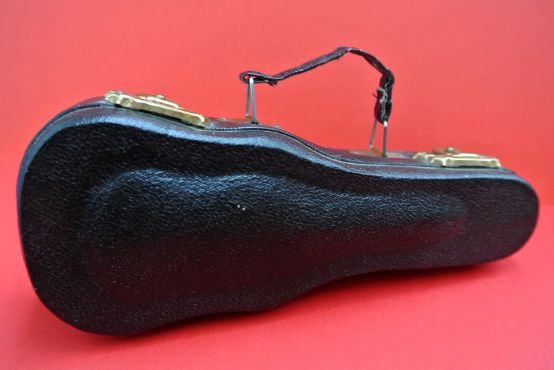Professional conditions of female violinists around 1800
"... like a man with a wooden spoon" - this title already points to the prejudices that a female violinist had to contend with around 1800. Volker Timmermann has examined historical material and shows the after-effects of discrimination right up to the present day.

Female violinists are not uncommon in public concert life, in contrast to female conductors and composers, for example. They perform as soloists, and they are more numerous in chamber music ensembles and orchestras when the audition for the positions behind the curtain takes place. Is there a need for a gender-differentiated historiography for female violinists after all?
The title of this book, ... like a man with a wooden spoongives an idea: Around 1800, a female violinist did not have the same opportunities as a male violinist. Countless restrictions under the pretext of morality - large physical movements, for example, were frowned upon - excluded women from playing the violin. The author Volker Timmermann breaks down the numerous social norms of bourgeois society that determined the choice of instrument, training and professional practice. These norms led to a divide between women and men, which in the case of female violinists manifested itself in the lack of opportunities for exchange with composers, as even a respected virtuoso was not considered an equal partner for a composer. Another limiting factor was the emergence of public concert criticism in the press, which in the 19th century judged whether female violinists played the role ascribed to them by society. The reservations were reflected in the form of massive gaps in the historiography. Using rich source material from various countries, the author shows how much elbow room - both literally and figuratively - female violinists enjoyed in different parts of Europe and how, even a hundred years after Antonio Vivaldi's death, Italian women in particular benefited from the fame of his Venetian violin school and the fact that female violin virtuosos were taken for granted. Particularly noteworthy are Timmermann's analyses of pictorial representations of female violinists and their instruments, which show the discrepancy between social expectations of moral movements on the one hand and the technical demands of violin playing on the other. The biographies of four hitherto barely documented female musicians complete the portrayal of the professional conditions of female violinists around 1800.
The subtle power mechanisms that have determined the professional opportunities of female violinists for 200 years still resonate in today's musical life. After all, how often is a sixty-year-old female violinist heard as a soloist in the concert hall today? Exactly. It is not only the audience's ear that determines the continuation of a female musician's career. This study explains why. It is aimed at both academics (interpretation research, historical musicology, gender studies) and music lovers who want to question their listening and viewing habits in the concert hall.
Volker Timmermann: "... like a man with a wooden spoon". Violinists around 1800, series of publications of the Sophie Drinker Institute, edited by Freia Hoffmann, 298 p., ca. Fr. 35.00, BIS-Verlag der Carl-von-Ossietzky-Universität Oldenburg, 2017, ISBN 978-3-8142-2360-5








